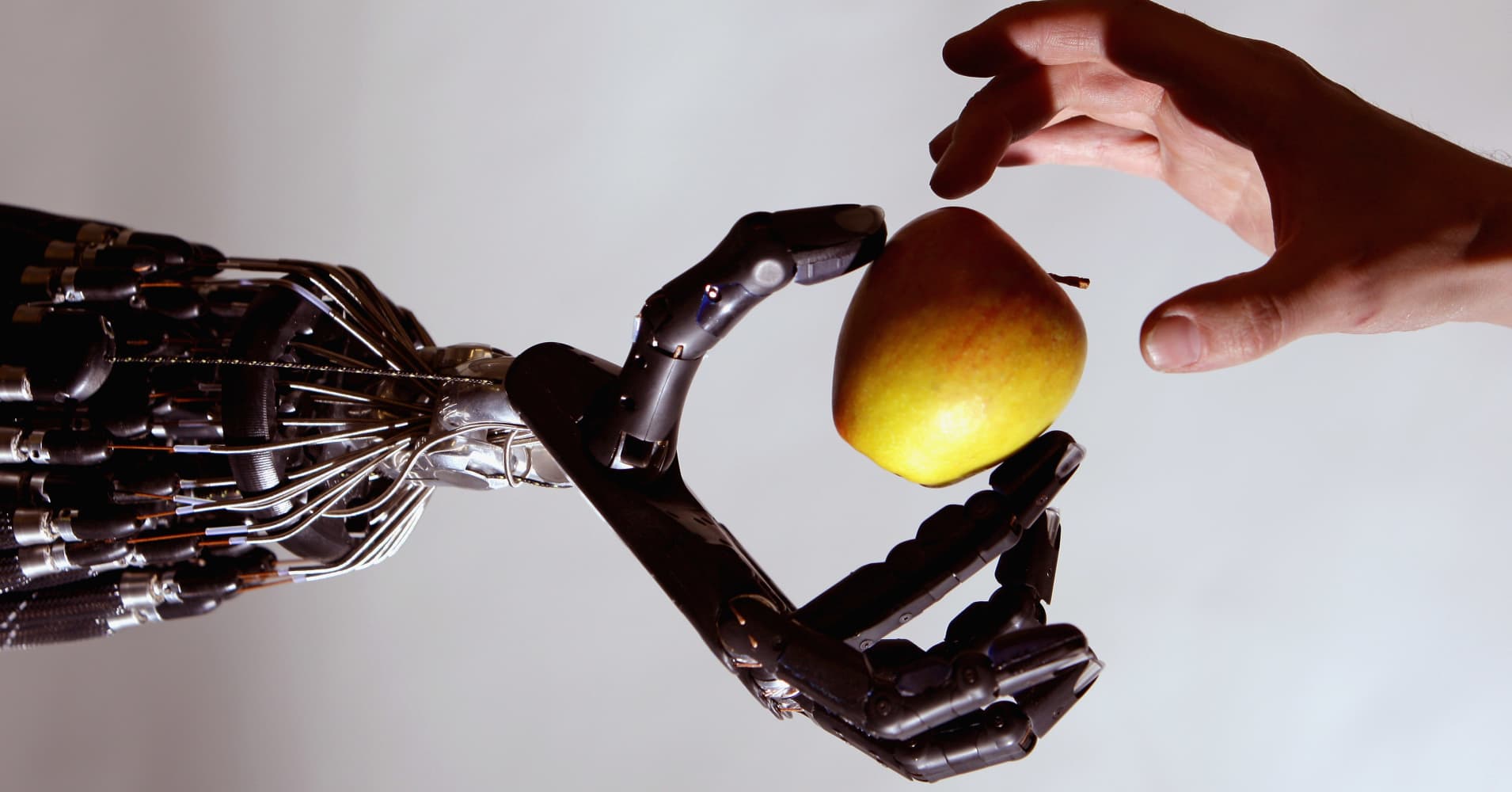 Robert O. Work, the veteran defense official retained as deputy secretary by President Trump, calls them his “A. I. dudes.” The breezy moniker belies their serious task: The dudes have been a kitchen cabinet of sorts, and have advised Mr. Work as he has sought to reshape warfare by bringing artificial intelligence to the battlefield.
Robert O. Work, the veteran defense official retained as deputy secretary by President Trump, calls them his “A. I. dudes.” The breezy moniker belies their serious task: The dudes have been a kitchen cabinet of sorts, and have advised Mr. Work as he has sought to reshape warfare by bringing artificial intelligence to the battlefield.
Last spring, he asked, “O. K., you guys are the smartest guys in A. I., right?”
No, the dudes told him, “the smartest guys are at Facebook and Google,” Mr. Work recalled in an interview.
Now, increasingly, they’re also in China. The United States no longer has a strategic monopoly on the technology, which is widely seen as the key factor in the next generation of warfare.
The Pentagon’s plan to bring A. I. to the military is taking shape as Chinese researchers assert themselves in the nascent technology field. And that shift is reflected in surprising commercial advances in artificial intelligence among Chinese companies.
Last year, for example, Microsoft researchers proclaimed that the company had created software capable of matching human skills in understanding speech.
Although they boasted that they had outperformed their United States competitors, a well-known A. I. researcher who leads a Silicon Valley laboratory for the Chinese web services company Baidu gently
That, in a nutshell, is the challenge the United States faces as it embarks on a new military strategy founded on the assumption of its continued superiority in technologies such as robotics and artificial intelligence.
First announced last year by Ashton B. Carter , President Barack Obama’s defense secretary, the “Third Offset” strategy provides a formula for maintaining a military advantage in the face of a renewed rivalry with China and Russia.
Well into the 1960s, the United States held a military advantage based on technological leadership in nuclear weapons. In the 1970s, that perceived lead shifted to smart weapons, based on brand-new Silicon Valley technologies like computer chips. Now, the nation’s leaders plan on retaining that military advantage with a significant commitment to artificial intelligence and robotic weapons.
But the global technology balance of power is shifting. From the 1950s through the 1980s, the United States carefully guarded its advantage. It led the world in computer and material science technology, and it jealously hoarded its leadership with military secrecy and export controls.
In the late 1980s, the emergence of the inexpensive and universally available microchip upended the Pentagon’s ability to control technological progress. Now, rather than trickling down from military and advanced corporate laboratories, today’s new technologies increasingly come from consumer electronics firms. Put simply, the companies that make the fastest computers are the same ones that put things under our Christmas trees.
Immigration Order Complicates U. S. Businesses‘ Plans in the Middle East
Trump Moves to Roll Back Obama-Era Financial Regulations
Fiduciary Rule Is Now in Question. What’s Next for Investors.
As consumer electronics manufacturing has moved to Asia, both Chinese companies and the nation’s government laboratories are making major investments in artificial intelligence.
The advance of the Chinese was underscored last month when Qi Lu, a veteran Microsoft artificial intelligence specialist, left the company to become chief operating officer at Baidu, where he will oversee the company’s ambitious plan to become a global leader in A. I.
And last year, Tencent, developer of the mobile app WeChat, a Facebook competitor, created an artificial intelligence research laboratory and began investing in United States-based A. I. companies.
Rapid Chinese progress has touched off a debate in the United States between military strategists and technologists over whether the Chinese are merely imitating advances or are engaged in independent innovation that will soon overtake the United States in the field.
“The Chinese leadership is increasingly thinking about how to ensure they are competitive in the next wave of technologies,” said Adam Segal, a specialist in emerging technologies and national security at the Council on Foreign Relations.
In August, the state-run China Daily reported that the country had embarked on the development of a cruise missile system with a “high level” of artificial intelligence. The new system appears to be a response to a missile the United States Navy is expected to deploy in 2018 to counter growing Chinese military influence in the Pacific.
Known as the Long Range Anti- Ship Missile , or L. R. A. S. M., it is described as a “semiautonomous” weapon. According to the Pentagon, this means that though targets are chosen by human soldiers, the missile uses artificial intelligence technology to avoid defenses and make final targeting decisions.
The new Chinese weapon typifies a strategy known as “remote warfare,” said John Arquilla, a military strategist at the Naval Post Graduate School in Monterey, Calif. The idea is to build large fleets of small ships that deploy missiles, to attack an enemy with larger ships, like aircraft carriers.
“They are making their machines more creative,” he said. “A little bit of automation gives the machines a tremendous boost.”
Whether or not the Chinese will quickly catch the United States in artificial intelligence and robotics technologies is a matter of intense discussion and disagreement in the United States.
Andrew Ng, chief scientist at Baidu, said the United States may be too myopic and self-confident to understand the speed of the Chinese competition.
“There are many occasions of something being simultaneously invented in China and elsewhere, or being invented first in China and then later making it overseas,” he said. “But then U. S. media reports only on the U. S. version. This leads to a misperception of those ideas having been first invented in the U. S.”
A key example of Chinese progress that goes largely unreported in the United States is Iflytek , an artificial intelligence company that has focused on speech recognition and understanding natural language. The company has won international competitions both in speech synthesis and in translation between Chinese- and English-language texts.
The company, which Chinese technologists said has a close relationship with the government for development of surveillance technology, said it is working with the Ministry of Science and Technology on a “Humanoid Answering Robot.”
“Our goal is to send the machine to attend the college entrance examination, and to be admitted by key national universities in the near future,” said Qingfeng Liu, Iflytek’s chief executive.
The speed of the Chinese technologists, compared to United States and European artificial intelligence developers, is noteworthy. Last April, Gansha Wu, then the director of Intel’s laboratory in China, left his post and began assembling a team of researchers from Intel and Google to build a self-driving car company. Last month, the company, Uisee Technology, met its goal — taking a demonstration to the International Consumer Electronics Show in Las Vegas — after just nine months of work.
“The A. I. technologies, including machine vision, sensor fusion, planning and control, on our car are completely home-brewed,” Mr. Wu said. “We wrote every line by ourselves.”
Their first vehicle is intended for controlled environments like college and corporate campuses, with the ultimate goal of designing a shared fleet of autonomous taxis.
The United States’ view of China’s advance may be starting to change. Last October, a White House report on artificial intelligence included several footnotes suggesting that China is now publishing more research than scholars here.
Still, some scientists say the quantity of academic papers does not tell us much about innovation. And there are indications that China has only recently begun to make A. I. a priority in its military systems.
“I think while China is definitely making progress in A. I. systems, it is nowhere close to matching the U.






